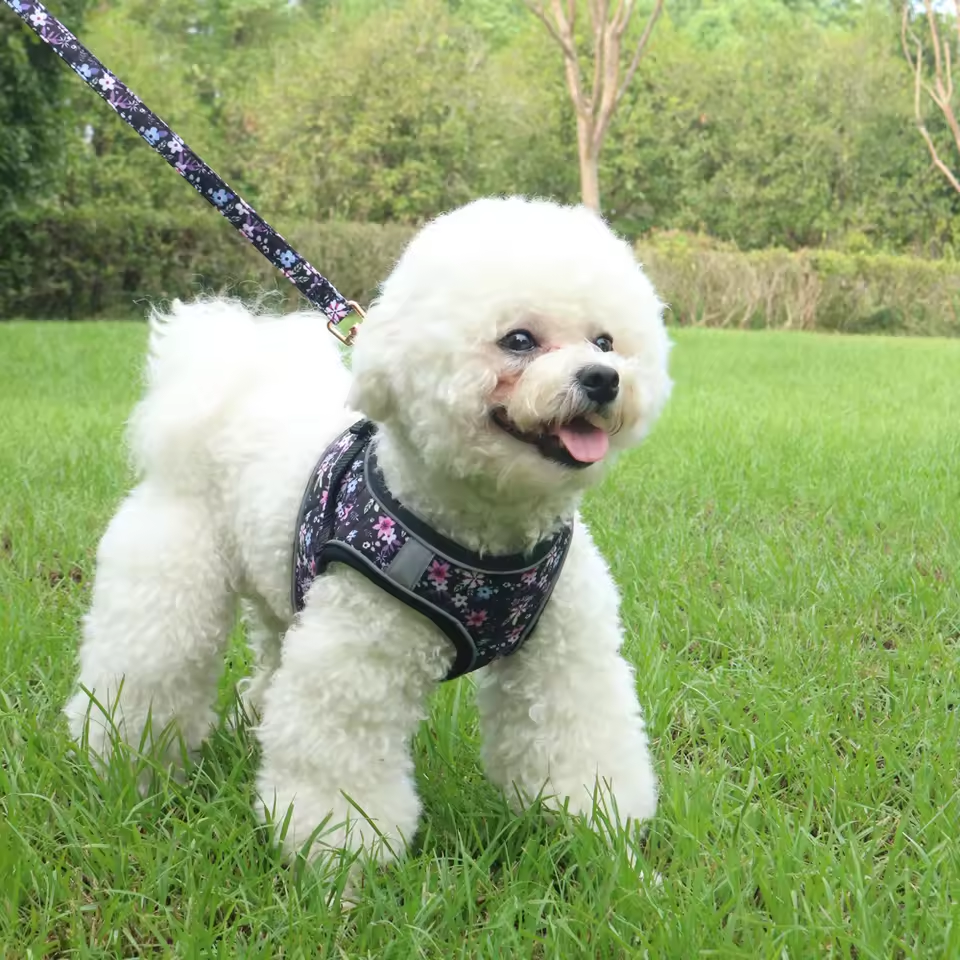Dog prong training collars, also known as pinch collars, are controversial tools used to correct unwanted leash behavior in dogs. These collars consist of metal links with blunted prongs that tighten around a dog’s neck when pulled on by the leash. Proponents of prong collars argue that they are an effective way to quickly curb pulling and other leash manners issues, while opponents raise concerns about potential for pain and improper use.
This article will provide a comprehensive exploration of dog prong training collars, including their design, how they work, and the pros and cons of their use. We will also delve into alternative training methods and offer guidance on how to choose the right training approach for your dog.
Contents
Understanding Prong Collars
Dog prong collars are typically made of steel or stainless steel links. Each link has two blunt prongs that come together when the leash is pulled. The tightening of the prongs applies pressure around the dog’s neck, mimicking the corrective nip a mother dog might give her puppies.
There are several different designs of prong collars available. Some have a center plate that ensures the prongs tighten evenly, while others have a loose ring design. Prong collars also come in various sizes to accommodate different neck circumferences.
It is important to note that prong collars are not designed for continuous wear. They should only be used during training walks and should be removed when the training session is complete.
How Prong Collars Work
The theory behind prong collars is that the gentle pinch sensation they create simulates a natural correction a mother dog might give her puppies. When a dog pulls on the leash, the prongs tighten, delivering a quick and surprising correction. This discourages pulling and encourages the dog to focus on the handler.
Ideally, prong collars are used in conjunction with positive reinforcement training methods. When the dog walks nicely on a leash, they are rewarded with treats or praise. This positive reinforcement helps the dog learn the desired behavior. Over time, with consistent training, the use of the prong collar should become less and less necessary.
Pros and Cons of Prong Collars
Pros:
- Effective: Prong collars can be an effective tool for quickly curbing pulling and other leash manners issues in dogs, especially strong or stubborn dogs.
- Relatively quick results: Many dog owners report seeing positive changes in their dog’s leash behavior within a short period of time using a prong collar.
- Better communication: Some proponents argue that prong collars provide a clearer form of communication for dogs that may not respond well to leash corrections.
Cons:
- Potential for misuse: Prong collars can be misused if not fitted and used correctly. A prong collar that is too tight or used with excessive force can cause pain and injury to the dog.
- Discomfort: Even when used correctly, prong collars may cause some discomfort to dogs. The pinching sensation can be startling or unpleasant for some dogs.
- Negative associations: The use of prong collars can create negative associations with walks and leash training for some dogs.
- Not a magic solution: Prong collars are a training tool, not a magic bullet. They should be used in conjunction with positive reinforcement training for lasting results.
Are Prong Collars Right for Your Dog?
The decision of whether or not to use a prong collar on your dog is a personal one. There is no right or wrong answer, and the best approach will vary depending on the individual dog and the severity of the leash behavior problems.
Consider these factors before using a prong collar:
- Severity of the problem: If your dog’s pulling is mild to moderate, a prong collar may not be necessary. Positive reinforcement training and other leash training techniques may be sufficient.
- Your dog’s temperament: Prong collars are not suitable for all dogs. They may be too harsh for sensitive dogs or dogs prone to anxiety.
- Your experience level: Prong collars require proper fitting and use to be effective and safe. If you are not comfortable using a prong collar, it is best to seek professional help from a certified dog trainer.
Alternatives to Prong Collars
There are a number of alternative training methods that can be effective in addressing leash behavior problems in dogs. These methods focus on positive reinforcement and building a positive association with leash walks.
Here are some popular alternatives to prong collars:
- Head halter: A head halter is a harness that clips to the dog’s nose loop. When the dog pulls, the halter gently turns their head towards the handler, making it difficult to continue pulling.
- Front-clip harness: A front-clip harness clips the leash to the dog’s chest rather than their back. This discourages pulling by redirecting the dog’s forward momentum when they pull.
- Positive reinforcement training: Positive reinforcement training rewards good behavior and discourages unwanted behavior. This can be done with treats, praise, or toys.

Choosing the Right Training Method
The best training method for your dog will depend on their individual needs and temperament. Here are some tips for choosing the right approach:
- Start with positive reinforcement: Positive reinforcement training should always be the foundation of any leash training program.
- Consider your dog’s breed and size: Some breeds may respond better to certain training methods than others. Consider your dog’s size and strength when choosing a training tool.
- Seek professional help: If you are struggling to train your dog on your own, consider consulting with a certified professional dog trainer. They can help you develop a personalized training plan that is safe and effective for your dog.
Using a Prong Collar Safely and Effectively
If you decide to use a prong collar on your dog, it is crucial to use it safely and effectively. Here are some important tips:
- Fit is essential: A properly fitted prong collar should be snug but not tight. You should be able to slip two fingers under the collar comfortably.
- Never leave it on: Prong collars should only be used during training walks and should be removed when the training session is complete.
- Start low and go slow: Begin with the prongs loose and gradually tighten them as needed. Use the least amount of pressure necessary to achieve the desired results.
- Be patient and consistent: Training takes time and patience. Be consistent with your training and use the prong collar only as a temporary tool.
Dog prong training collars can be a controversial topic. While they can be an effective tool for curbing leash manners problems in some dogs, they are not without their risks. Before using a prong collar, it is important to weigh the pros and cons and to consider alternative training methods.
If you do choose to use a prong collar, it is essential to use it safely and effectively. Always prioritize your dog’s well-being and seek professional help if you have any concerns.
Remember, the goal of leash training is to build a positive association with walks and to create a communication system between you and your dog. With patience, positive reinforcement, and the right training methods, you can achieve a happy and well-mannered leash walker.






